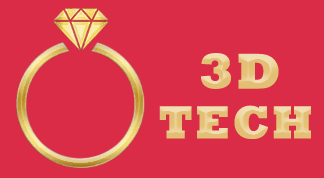
The Future of Jewelry Design: Harnessing CAD and CAM Technologies
Introduction
In the world of jewelry design, innovation plays a crucial role in creating stunning pieces that captivate and inspire. The advent of Computer-Aided Design (CAD) and Computer-Aided Manufacturing (CAM) has revolutionized the jewelry industry, enabling designers to push the boundaries of creativity while ensuring precision and efficiency. This blog explores how CAD and CAM are transforming jewelry design, their benefits, and how they can help jewelers stay competitive in a fast-paced market.
1. Understanding CAD and CAM
1.1 What is CAD?
Computer-Aided Design (CAD) is a digital tool that allows jewelry designers to create detailed 3D models of their creations. With CAD software, designers can visualize their ideas, make intricate adjustments, and experiment with different styles and materials before moving to production.
1.2 What is CAM?
Computer-Aided Manufacturing (CAM) takes the designs created in CAD and translates them into physical products through automated processes. CAM software controls machinery such as CNC (Computer Numerical Control) machines, which cut, engrave, or shape materials with high precision.
2. Benefits of Using CAD in Jewelry Design
2.1 Enhanced Creativity
CAD tools provide designers with the flexibility to explore complex shapes and intricate details that would be challenging to achieve by hand. This technology allows for rapid prototyping and the ability to experiment without significant material costs.
2.2 Precision and Accuracy
CAD software enables designers to create exact measurements and specifications for each piece. This precision minimizes errors in the production process, ensuring that the final product matches the original vision perfectly.
2.3 Easy Modifications
One of the standout features of CAD is the ease with which designers can make modifications. Whether adjusting a stone setting or changing a metal type, modifications can be made quickly and easily, saving time and resources.
3. Advantages of CAM in Jewelry Manufacturing
3.1 Increased Efficiency
CAM streamlines the manufacturing process by automating repetitive tasks. This efficiency leads to faster production times and allows jewelers to fulfill larger orders without compromising quality.
3.2 Consistency in Production
With CAM, every piece produced is identical to the original design. This consistency is vital in maintaining quality and meeting customer expectations, especially for larger orders.
3.3 Cost-Effectiveness
While the initial investment in CAD and CAM technology may be significant, the long-term savings on labor and materials often outweigh the costs. Automated processes reduce human error, leading to fewer wasted materials and resources.
4. Integrating CAD and CAM in the Jewelry Workflow
4.1 From Design to Production
The integration of CAD and CAM creates a seamless workflow. Designers start with CAD to create a detailed model, which is then exported to CAM software to guide the manufacturing process. This integration minimizes the chances of miscommunication between design and production teams.
4.2 Real-World Applications
Many jewelry companies have adopted CAD and CAM to enhance their design and production capabilities. For instance, brands can use these technologies to create custom pieces for clients or develop limited-edition collections that stand out in the market.
5. Challenges and Considerations
5.1 Learning Curve
While CAD and CAM technologies offer many benefits, there can be a steep learning curve for those unfamiliar with the software. Training and practice are essential to harness the full potential of these tools.
5.2 Initial Investment
Investing in CAD and CAM technology requires upfront costs for software, machinery, and training. However, many jewelers find that the return on investment justifies the initial expenditure.
6. Future Trends in CAD and CAM for Jewelry
6.1 Advancements in Technology
As technology continues to evolve, we can expect further advancements in CAD and CAM tools, including improved user interfaces and more powerful modeling capabilities. These advancements will empower designers to create even more complex and unique pieces.
6.2 Sustainable Practices
The jewelry industry is increasingly focusing on sustainability. CAD and CAM can help designers optimize material usage, reduce waste, and create eco-friendly designs that appeal to environmentally conscious consumers.
Conclusion
The integration of CAD and CAM in jewelry design and manufacturing has opened new avenues for creativity and efficiency. As these technologies continue to evolve, they will undoubtedly shape the future of the industry. For jewelers looking to stay competitive, embracing CAD and CAM is no longer just an option—it’s a necessity. By leveraging these tools, designers can create stunning, high-quality jewelry that meets the demands of modern consumers.











